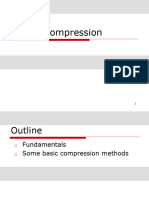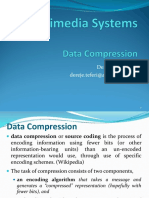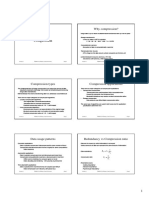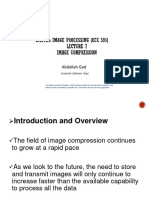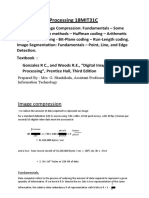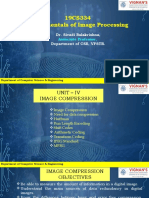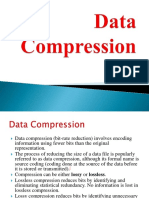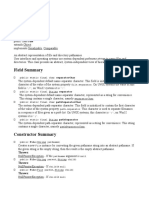0% found this document useful (0 votes)
11 views19 pagesConcepts of Image Compression
Image compression is the process of reducing the amount of data needed to represent an image, which is essential for efficient storage and transmission. It involves removing redundancies through encoding and quantization, leading to either lossless or lossy compression methods. The document discusses the importance of compression in various applications, including video storage and web images, and outlines the types of redundancies that can be eliminated.
Uploaded by
nisthajain1228Copyright
© © All Rights Reserved
We take content rights seriously. If you suspect this is your content, claim it here.
Available Formats
Download as PDF, TXT or read online on Scribd
0% found this document useful (0 votes)
11 views19 pagesConcepts of Image Compression
Image compression is the process of reducing the amount of data needed to represent an image, which is essential for efficient storage and transmission. It involves removing redundancies through encoding and quantization, leading to either lossless or lossy compression methods. The document discusses the importance of compression in various applications, including video storage and web images, and outlines the types of redundancies that can be eliminated.
Uploaded by
nisthajain1228Copyright
© © All Rights Reserved
We take content rights seriously. If you suspect this is your content, claim it here.
Available Formats
Download as PDF, TXT or read online on Scribd
/ 19






